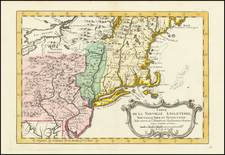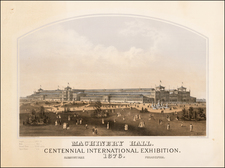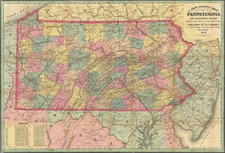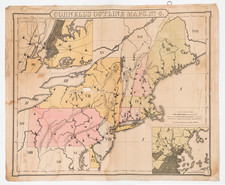Rand-McNally's New Commercial Atlas Map of Pittsburgh is a detailed cartographic representation of the city during its prosperous industrial era. Published by Rand McNally in Chicago in 1912, this map provides valuable insights into the urban landscape and transportation network of Pittsburgh at the time.
This map offers a comprehensive view of the city, presenting detailed street layouts, buildings, landmarks, and other significant features. Notably, red lines are incorporated into the map to indicate the locations of Pittsburgh's streetcar lines. These lines, crucial for urban transportation during that period, contributed to the city's growth and development.
The map serves as a historical document, providing a glimpse into Pittsburgh's urban landscape during a period of rapid industrialization. It offers a valuable resource for researchers, historians, and enthusiasts seeking to explore the city's history, geography, and transportation infrastructure.
The Rand-McNally New Commercial Atlas Map of Pittsburgh stands as a testament to the cartographic excellence of Rand McNally and serves as a valuable resource for understanding the urban dynamics of Pittsburgh in 1912. Its detailed depiction of streetcar lines adds an additional layer of historical significance, showcasing the importance of public transportation in the city's development.
Rand McNally & Co. is a large American map and navigation company best known for its annual atlases. The company got its start in 1856, when William Rand opened a print shop in Chicago. He was joined in 1858 by a new employee, Andrew McNally. Together, the men established their namesake company in 1868. Originally, the company was intended to print the tickets and timetables for the trains running to and through Chicago; their first railway guide was published in 1869.
By 1870, they had shifted from just printing to publishing directories, travel guides, and newspapers. Their first map appeared in 1872 in a railway guide. The map was produced using a new wax engraving method, a cheaper process that gave the company an edge.
By 1880 Rand McNally had entered the education market with globes, wall maps, and geography texts for students. In 1923, Rand McNally published the first Goode’s World Atlas, named after its editor, Dr. J. Paul Goode. For generations afterward, this would be the standard classroom atlas.
In 1899, William Rand left the company, but McNally and his family remained, controlling the company for over a century. In 1904, they published their first road map intended for automobiles and by 1907 were publishing Photo-Auto Guides, which combined photography and mapping to help drivers. In 1924, they produced the Auto Chum, a precursor to their famous road atlases. Rand McNally would remain the leader in road maps and atlases throughout the twentieth century.
In 1937, Rand McNally opened its first store in New York City. Ever on the frontier of technology, Rand McNally pioneered the scribing process for printing tickets in 1958 and printed their first full-color road atlas in 1960. Arthur Robinson developed his now-famous projection of Rand McNally in 1969. By the 1980s, the company was exploring digital reproduction and digital databases of maps for truckers. In the 1990s, they lead the charge to develop trip-planning software and websites. Today, most of its products are available online or in a digital format, including maps for tablets and phones.










![[Theater of American Revolution / 1776] A Map of the Country round Philadelphia including Part of New Jersey New York Staten Island & Long Island](https://storage.googleapis.com/raremaps/img/small/86066.jpg)



![[ Pennsylvania Manuscript - Thomas Vickroy Surveys in Bedford (now Somerset) County] (Four maps on 1 sheet)](https://storage.googleapis.com/raremaps/img/small/83404.jpg)